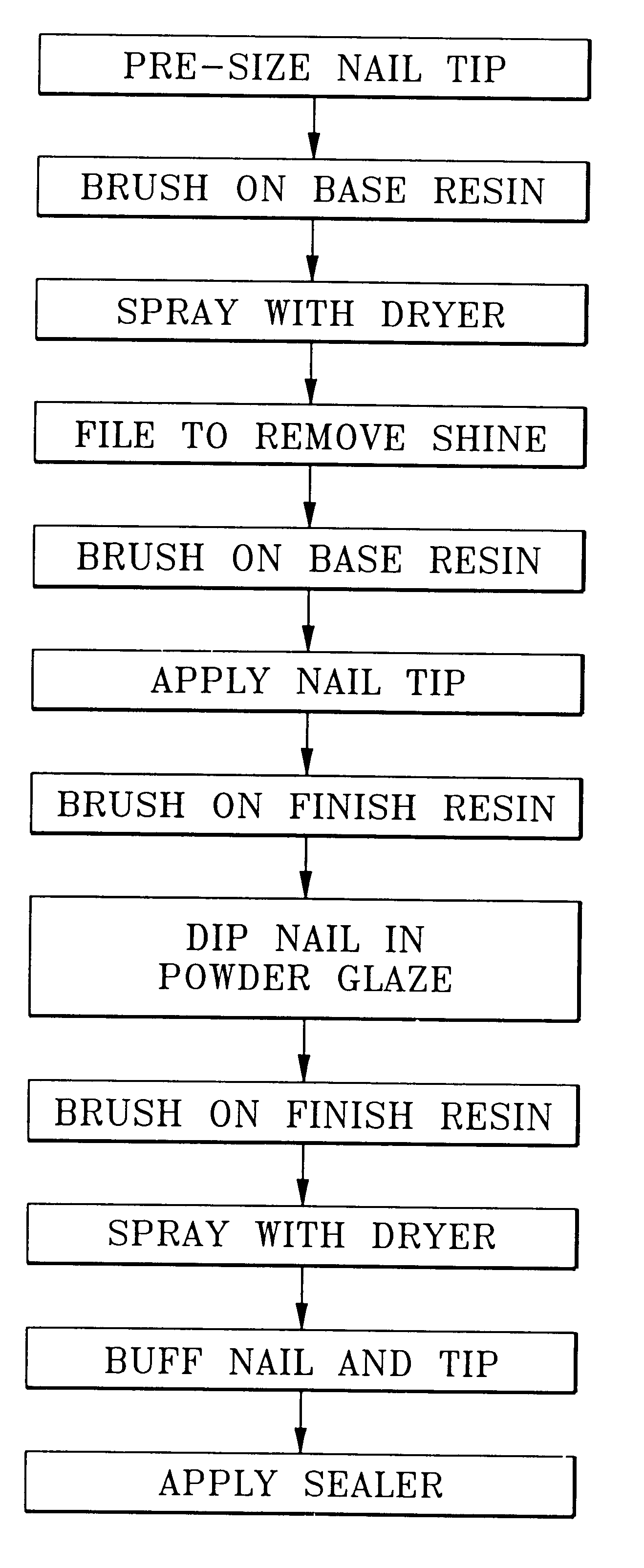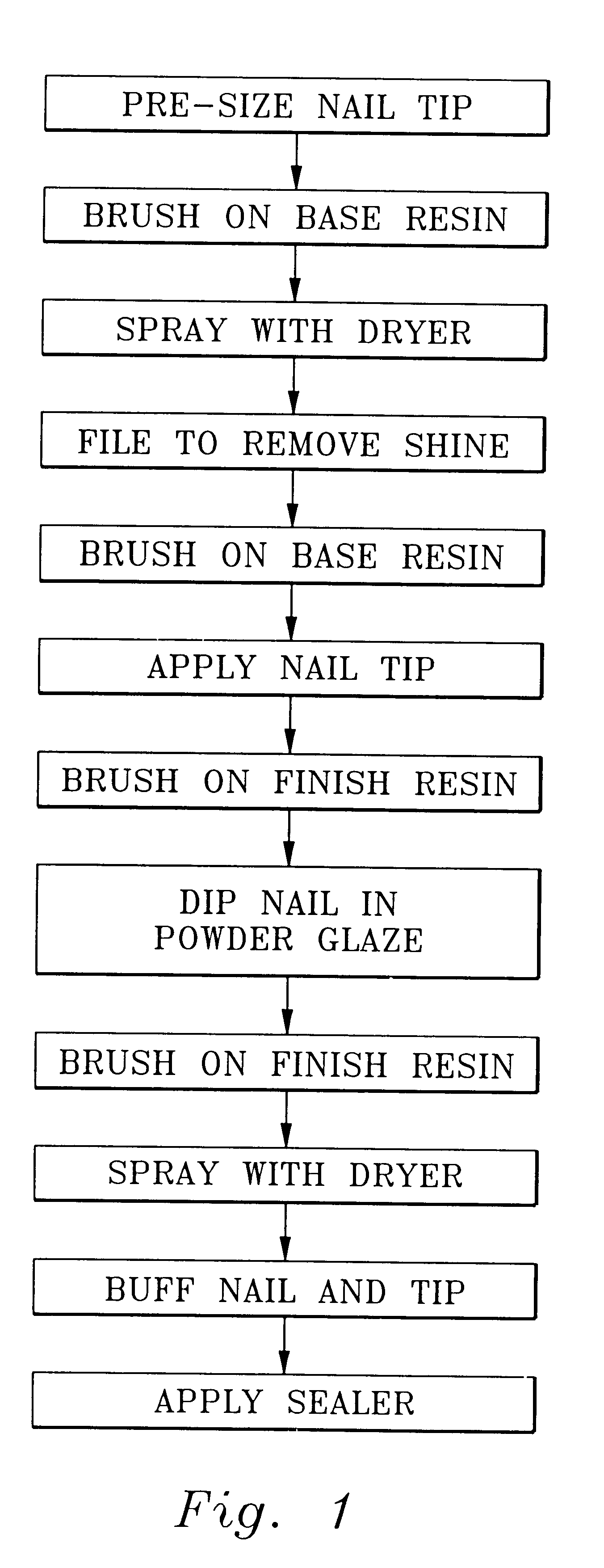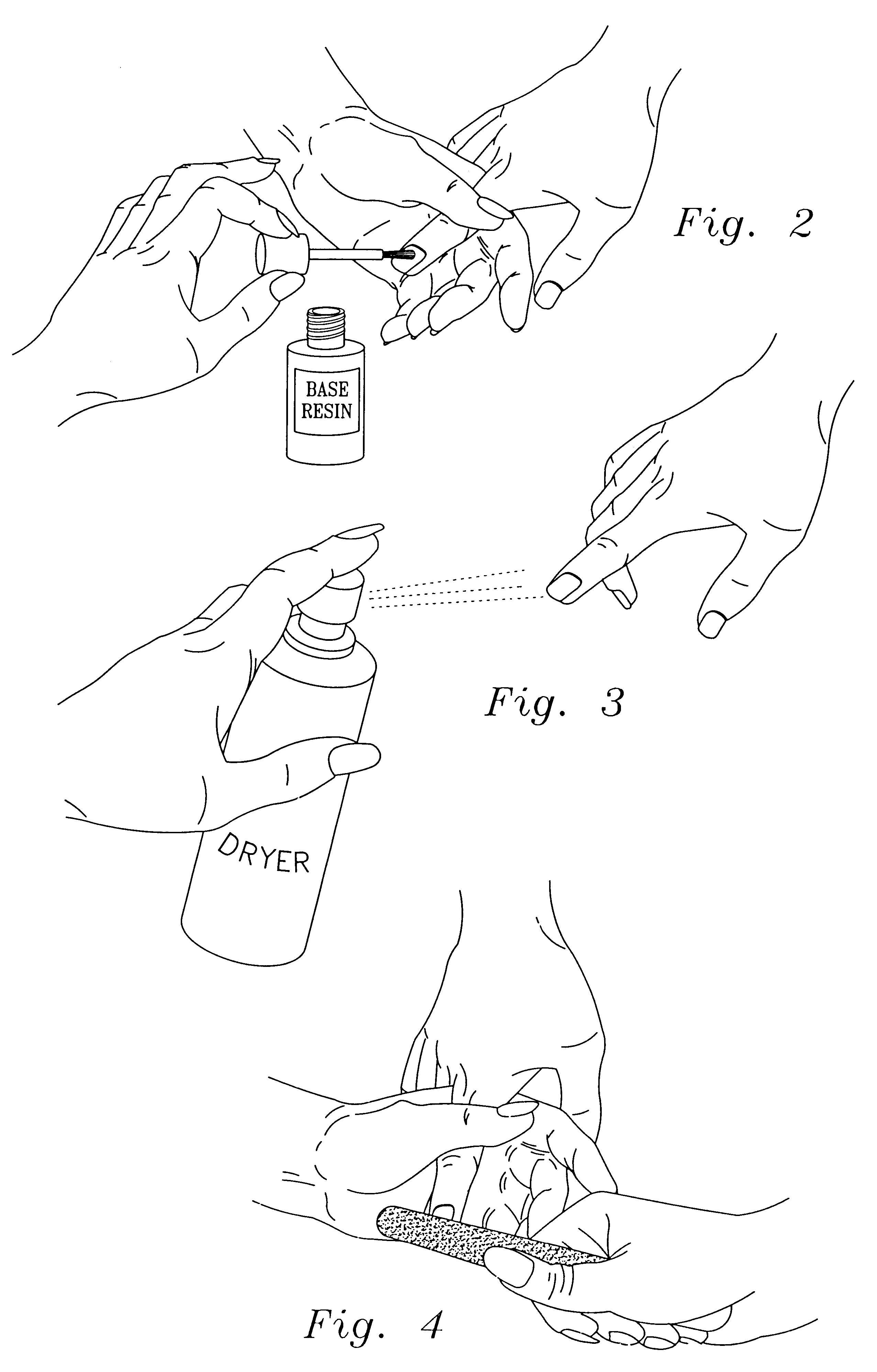Method of applying nail tips and composition
a technology applied in the field of nail tips and compositions, can solve the problems of user's substantial, time-consuming effort of filing the surface of polymerized resin, limited cure time in nail processing, etc., and achieve the effect of convenient and economical use of components and compositions, long shelf life and fast fixation
- Summary
- Abstract
- Description
- Claims
- Application Information
AI Technical Summary
Benefits of technology
Problems solved by technology
Method used
Image
Examples
Embodiment Construction
Referring now to FIG. 1, the applicant's preferred embodiment consists of twelve easy steps, with no mandatory nail brushing, no mandatory nail filing, and no mandatory use of polymer solvents. Before commencing the twelve steps of FIG. 1, however, the applicant generally prefers to engage in certain limited nail preparation steps as follows:
1. Remove any pre-existing nail polish from the finger nail with a nail polish stripper in a fashion well known to those of skill in the art.
2. Cleanse the hands, including the finger nails, with a hygienic soap; rinse the hands and nails with warm water, and let dry thoroughly. It is important that this cleaning step should not involve use of any primers or dehydrators.
3. Push back the cuticles on each finger nail with a rubber tipped cuticle pusher such as are commonly available on the market.
4. Trim and shape each finger nail, leaving approximately 1 / 16" of free outer edge on the exposed end of the finger nail. Smooth the free edge using a fi...
PUM
 Login to View More
Login to View More Abstract
Description
Claims
Application Information
 Login to View More
Login to View More - R&D
- Intellectual Property
- Life Sciences
- Materials
- Tech Scout
- Unparalleled Data Quality
- Higher Quality Content
- 60% Fewer Hallucinations
Browse by: Latest US Patents, China's latest patents, Technical Efficacy Thesaurus, Application Domain, Technology Topic, Popular Technical Reports.
© 2025 PatSnap. All rights reserved.Legal|Privacy policy|Modern Slavery Act Transparency Statement|Sitemap|About US| Contact US: help@patsnap.com



